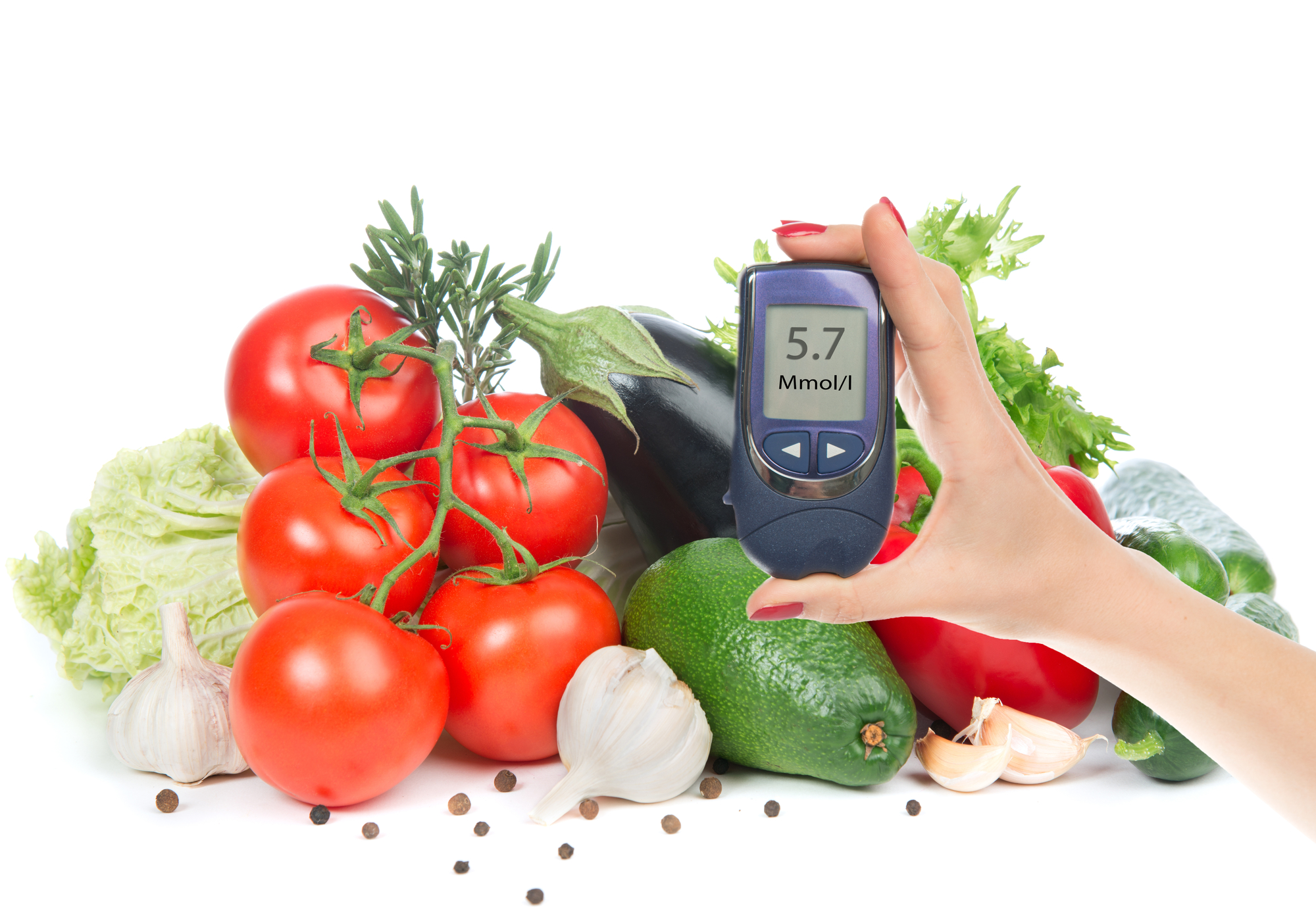Diabetes Plant-based Diet
Eating Low-Glycemic Plant Foods to Manage and Reverse Diabetes
Following a plant-based low-glycemic diet is a powerful way to manage and reverse diabetes. Here’s why:
-
-
- Helps keep blood glucose levels stable – low-glycemic foods break down more slowly and prevent dramatic blood glucose spikes.
- Reduces risk of complications for diabetes, such as kidney disease, nerve damage and vision problems by stabalizing blood glucose levels while providing powerful nutrients.
- Supports healthy body weight – low-glycemic foods can be more filling, preventing food cravings as well as energy and mood crashes as it stabilizes blood glucose levels.
- Improves insulin sensitivity by helping your cells utilize blood glucose more effectively.
- Lowers “bad” LDL cholesterol while maintaining “good” HDL cholesterol levels.
-
Download a pdf version of the
Diabetes Low-Glycemic Food List.
Why choosing low-glycemic foods is important
The foods we eat are broken down into glucose which enters our bloodstream, signalling the pancreas to release insulin. The insulin helps the blood glucose enter our body’s cells to be used for energy and signals our liver to store blood glucose to be used later.
Diabetes drastically reduces insulin’s effects on the body. The pancreas of those with type 1 diabetes are unable to produce insulin and, for those with type 2 diabetes, their bodies are resistant to the effects of insulin or don’t make enough insulin to keep normal glucose levels.
Persistently high blood glucose levels can damage nerves, blood vessels, and vital organs. Low-glycemic foods break down more slowly in the body, causing a smaller rise in blood glucose after eating. By eating low-glycemic foods, people with diabetes can control their blood glucose levels and prevent serious health problems, such as heart disease, vision loss, and kidney disease.
Difference between the Glycemic Index and Glycemic Load of foods
When choosing low-glycemic foods it’s important to consider both the Glycemic Index (GI) and the Glycemic Load (GL) of what you are eating.
GI is the rate a food item is digested and raises blood glucose levels in the body. Factors that effect a food’s GI are:
-
- The more processed the grain, the higher the GI. Grains that have been milled and refined have had the bran and germ removed (such as white rice). This causes your digestive system to breakdown the grain more quickly into glucose, causing a sugar spike. In addition, finely ground grain is more rapidly digested than coarsely ground grain. This is why eating whole grains in their “whole form” (such as brown rice or oats) can be healthier than eating highly processed whole grain bread.
- The higher the fiber content of a food, the lower the GI. Foods higher in fiber are digested more slowly and so slowly raise the level of blood glucose.
- The riper the fruits and vegetables, the higher the GI. Because of their higher sugar content and lower fiber, over-ripe plant foods will raise blood glucose levels faster.
- The higher the fat and acid content of a meal, the lower the GI. If you add a little oil to your potoate (a high GI food) you end up lowering the glycemic index when it’s eaten. However, be careful with how much fat you add to your meals as it does not negate the negative effects of a high fat diet! The good news is that acids, like lemon juice and apple cider vinager, also slow the rate of digestion of high GI foods.
GL takes this one step further by taking into account, not only the rate food is converted into blood glucose, but the amount of carbohydrates contained in a specific food. The GL score is determined by a calculation that estimates how much a specific food item will raise blood glucose levels when eaten. Simply multiply the grams of available carbohydrate in a specific food by that food’s GI, and then dividing by 100.
Tips for following a
plant-based, low-glycemic diet
1. Eat whole, unprocessed plant foods that are high in fiber, esp. before higher GI/GL foods.
Eat high fiber, higher fat foods BEFORE eating the higher GI/GL foods. This actually mitigates glucose spike.
Examples: fruits, vegetables, whole grains, beans, lentils, nuts and seeds.
2. Include low-glycemic foods at every meal.
Examples: leafy greens, berries, citrus fruits, tomatoes and broccoli. See food list to the left for more options.
3. Include protein sources to help stabilize your blood glucose levels.
Examples: beans, lentils, nuts, seeds and tofu.
4. Avoid refined carbs, added sugars and highly processed foods to prevent glucose spikes.
Examples of refined carbs: packaged cereals, bread, white rice, pasta, cakes, biscuits, sweets, pastries, pies, alcohol, etc.
Examples of added sugars: cane sugar, dextrose, fructose, glucose, high-fructose corn syrup, honey, lactose, molasses, sucrose, etc.
Examples of highly processed foods: sodas, syrups, candy, chips, bakery items, fast food, etc.
5. Limit high-glycemic foods that can increase blood glucose levels.
Examples: potatoes, dried fruit, grapes, white flour, etc.
6. Eat healthy fats to dull the urge for sweets & high carb food.
7. Watch portion size on the mod/high GI/GL foods.
Low-glycemic Plant-based Food List
Below is a chart that lists the GI and GL of different types of plant-based foods. The lower the score, the longer that food item takes to raise your blood glucose levels. If you don’t see a particular food item on this list, search that item at glycemic-index.net.
-
- Glycemic Index (GI) scale: Low = less than 55, Medium = 55–70, High = above 70
- Glycemic Load (GL) scale: Low = 10 or less, Medium = 11 to 19, High = 20 or higher
Important: The food items listed below are based on eating them plain, without adding any flavoring. How a food item is prepared (adding sauces, spices and/or oil) may change the GI / GL scores.
Fruits |
GI Score |
GL Score Per Serving |
| Apples | Low | Low |
| Avocados | Low | Low |
| Banana | Low – Medium | Medium |
| Blueberries | Low | Low |
| Dried fruit | High | High |
| Grapes (red or green) |
Medium | High |
| Lemon | Low | Low |
| Mango | Medium | Low |
| Nectarine | Low | Low |
| Oranges | Low | Low |
| Peach | Low | Low |
| Pineapple | Low – Medium | Low |
| Plums (fresh) | Low | Low |
| Tomatoes (fresh) | Low | Low |
| Watermelon | High | Low |
Vegetables |
GI Score |
GL Score Per Serving |
| Artichoke | Low | Low |
| Asparagus | Low | Low |
| Beets (boiled) | Medium | Low |
| Bell peppers (red or green) | Low | Low |
| Broccoli | Low | Low |
| Cabbage (white or red, raw) | Low | Low |
| Carrots (raw) | Low | Low |
| Cauliflower (raw) | Low | Low |
| Celery (raw) | Low | Low |
| Cucumbers | Low | Low |
| Eggplant (cooked) | Low | Low |
| Green beans | Low | Low |
|
Leafy greens (kale, spinach, chard, etc.) |
Low | Low |
| Mushrooms (raw or cooked) | Low | Low |
| Potato (baked, plain) | High | High |
| String beans | Low | Low |
| Sweet potato (baked, plain) | High | Medium – High |
| Zucchini | Low | Low |
Grains and Flours |
GI Score |
GL Score Per Serving |
| Brown rice (cooked, plain) | High | Medium |
| Oat flour | Low | Low |
| Quinoa (cooked, plain) | Low | Low |
| Rye flour | Low | High |
| White flour | High | High |
| Whole wheat | Low | High |
| Wild rice (cooked, plain) | Low | High |
Legumes, Nuts, and Seeds |
GI Score |
GL Score Per Serving |
| Almonds | Low | Low |
| Black beans | Low | Low |
| Black-eyed peas | Medium | High |
| Cashews | Low | Low |
| Chia seeds (dried) | Low | Medium |
| Chick peas (canned) | Low | Low |
| Flax seeds | Low | Low |
| Kidney beans | Low | Low |
| Lentils (green or yellow, plain) | Low | Low |
| Pistachios (roasted) | Low | Low |
| Red beans (canned) | Low | Medium |
| Split peas (including dal) | Low | Low |
| Sunflower seeds (dried) | Low | Low |
| White beans (canned) | Low | High |
Plant-based Oils |
GI Score |
GL Score Per Serving |
| Avocado oil | Low | Low |
| Coconut oil | Low | Low |
| Hemp seed oil | Low | Low |
| Olive oil | Low | Low |
| Sunflower oil | Low | Low |
Sweeteners |
GI Score |
GL Score Per Serving |
| Agave syrup | Low | Medium |
| Brown rice syrup | High | High |
| Coconut sugar | Low | Low |
| Maple syrup | Medium | High |
| Monk fruit | Low | Low |
| Stevia | Low | Low |
Data was extracted from https://glycemic-index.net/ and https://www.verywellhealth.com/.


